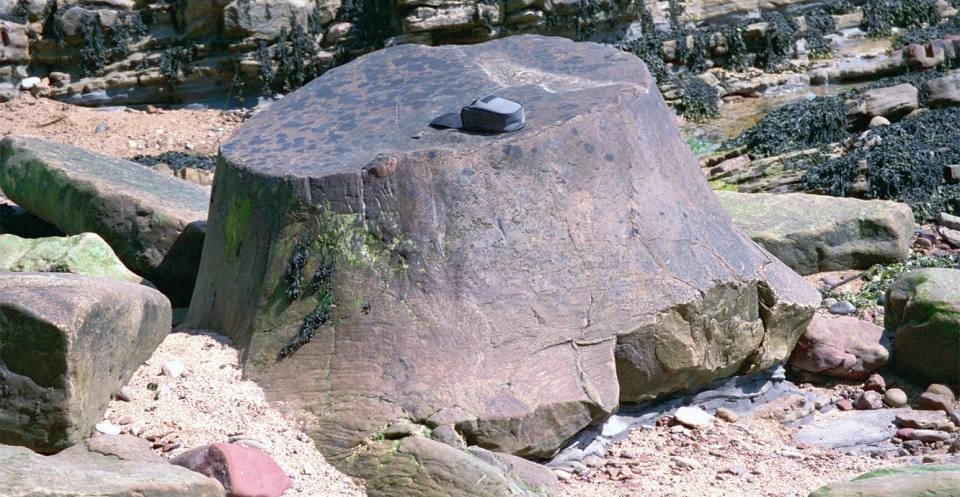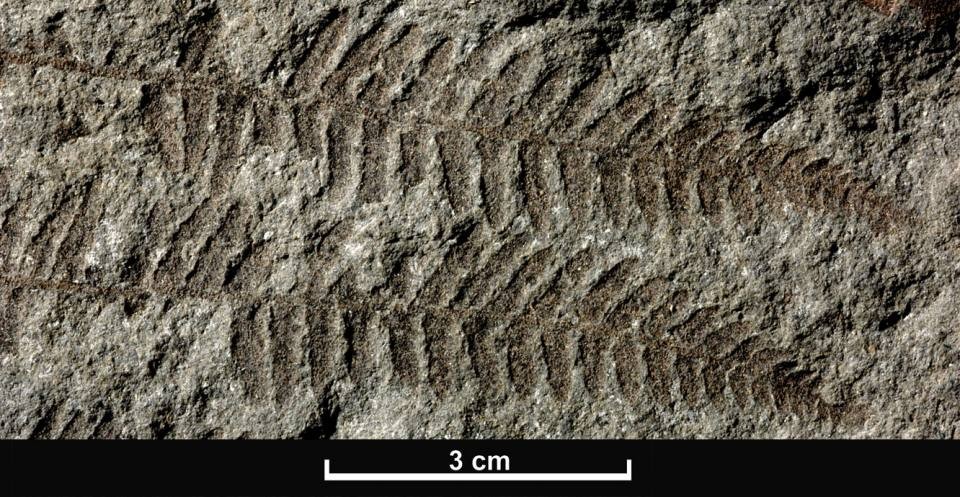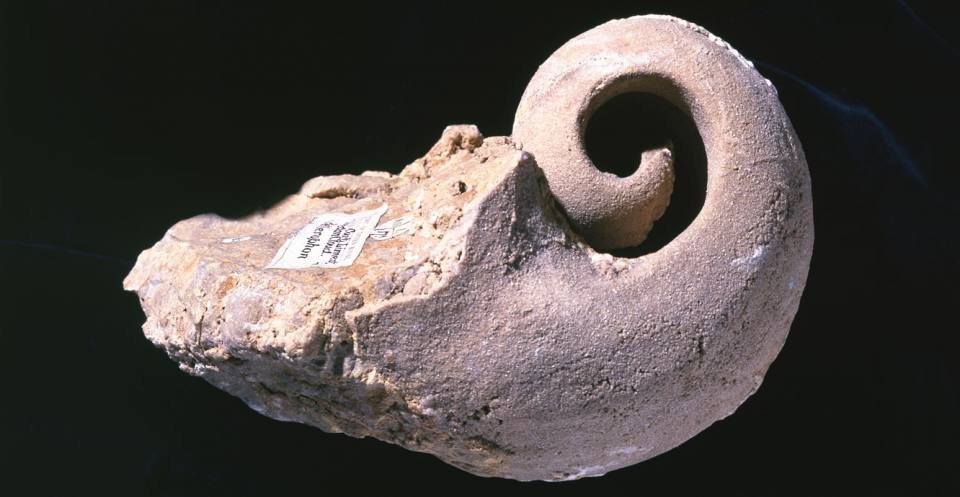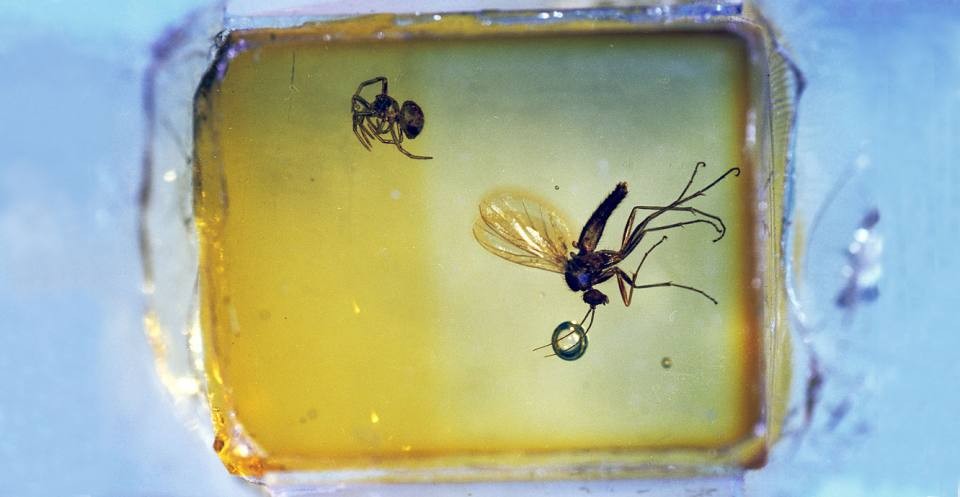Fossils: windows to the past that provide scientists with invaluable insights into life’s history, evolution, and the changing Earth. At LEARNS.EDU.VN, we understand the importance of exploring these ancient relics to uncover the secrets they hold, aiding in understanding prehistoric life and ancient ecosystems. Let’s delve into the transformative lessons unearthed from these preserved remains, covering fossil analysis, evolutionary biology, and geological timescales to enrich your comprehension of paleontology and Earth sciences.
Table of Contents
- Understanding Fossils: A Window to the Past
- Deciphering the Fossil Record: Clues to Evolution
- Fossils and Climate Change: Lessons from Ancient Ecosystems
- Dating the Past: How Fossils Help Determine Age
- Fossils as Evidence of Biodiversity: Past and Present
- The Role of Trace Fossils: Unveiling Behavior
- Exceptional Fossil Sites: Windows into Unique Moments in Time
- Modern Techniques in Fossil Analysis: Advances in Paleontology
- Fossils and the Study of Human Origins
- Challenges in Paleontology: Gaps and Biases in the Fossil Record
- The Future of Paleontology: What’s Next in Fossil Research?
- Fossils and Education: Inspiring the Next Generation
- Frequently Asked Questions (FAQs) About Fossils
1. Understanding Fossils: A Window to the Past
Fossils, derived from the Latin “fossilis” meaning “unearthed,” are the preserved remains or traces of ancient life. These relics offer more than just a glimpse into the past; they provide tangible evidence of evolution, environmental changes, and the interconnectedness of life on Earth. Generally, to be considered a fossil, the remain or trace must be at least 10,000 years old, dating back to the end of the last Ice Age. Fossils encompass a wide variety of forms, from the complete skeletons of dinosaurs to microscopic remnants of ancient bacteria, making each find a unique opportunity to explore Earth’s history.
- Body Fossils: These are the preserved remains of an organism’s body, such as bones, teeth, shells, and leaves.
- Trace Fossils: Also known as ichnofossils, these are the preserved evidence of an organism’s activity, like footprints, burrows, and even fossilized dung (coprolites).
- Chemical Fossils: Also called biomarkers, these are chemical compounds found in rocks that provide evidence of ancient life.
Understanding the different types of fossils is essential for reconstructing ancient ecosystems and tracing the evolution of life. The study of fossils, known as paleontology, helps us to understand the past and provides critical insights into the present and future of our planet.
2. Deciphering the Fossil Record: Clues to Evolution
The fossil record is a crucial source of evidence for understanding the evolution of life on Earth. Fossils provide a timeline, showing the sequence in which different organisms appeared and changed over millions of years. By studying fossils, scientists can identify transitional forms that bridge the gap between different groups of organisms, like Archaeopteryx, a fossil that exhibits characteristics of both reptiles and birds, supporting the theory of avian evolution from reptilian ancestors.
The fossil record also illustrates how organisms have adapted to different environments. For example, the fossil record of horses shows a transition from small, multi-toed creatures living in forested environments to larger, single-toed animals adapted to grasslands. These adaptations are responses to environmental changes, highlighting the dynamic interaction between life and its surroundings.
Key Evolutionary Insights from Fossils
- Transitional Forms: Fossils like Tiktaalik (a fish with limb-like fins) show the transition from aquatic to terrestrial life.
- Adaptive Radiation: The rapid diversification of a group of organisms into new forms, like the Cambrian explosion, is evident in the fossil record.
- Extinction Events: Fossils document major extinction events, such as the Permian-Triassic extinction, which wiped out a large percentage of marine and terrestrial life.
By analyzing the fossil record, scientists at institutions like the Smithsonian National Museum of Natural History and universities worldwide continue to refine our understanding of evolutionary processes and the history of life.
3. Fossils and Climate Change: Lessons from Ancient Ecosystems
Fossils offer invaluable insights into past climates and ecosystems. By studying fossilized plants and animals, scientists can reconstruct ancient environments and understand how they responded to climate changes. For example, the presence of specific types of pollen in fossil records can indicate the types of vegetation that thrived in an area during a particular period, providing clues about temperature and precipitation patterns.
Fossils also reveal how past ecosystems responded to major climate events, such as ice ages and periods of intense warming. Studying these responses can help us predict how modern ecosystems might react to current and future climate changes. For instance, fossils from the Eocene epoch show that tropical plants and animals once lived in regions that are now temperate, indicating a period of much warmer global temperatures.
Examples of Climate Insights from Fossils
| Fossil Type | Environmental Insight |
|---|---|
| Fossilized Coral | Provides records of sea surface temperatures and ocean acidity levels, helping to reconstruct past marine environments. |
| Fossilized Pollen | Indicates the types of plants present in an area, which can be used to infer temperature, precipitation, and other environmental conditions. |
| Fossilized Insects | Can indicate specific climate conditions, as insect distributions are often highly sensitive to temperature and humidity. |
| Marine Shell Fossils | Reveal information about ancient sea levels and water chemistry, helping scientists understand changes in ocean salinity and temperature. |
| Tree Ring Fossils | Provide a record of past climate variability, as tree growth is influenced by temperature and precipitation. Analysis of these rings can reveal patterns of drought, flooding, and warming. |




Understanding the relationship between fossils and climate change is vital for making informed decisions about environmental policy and conservation efforts, crucial topics often explored in detail at LEARNS.EDU.VN.
4. Dating the Past: How Fossils Help Determine Age
Fossils are essential tools for determining the age of rocks and understanding geological history. Two primary methods are used to date fossils: relative dating and absolute dating.
-
Relative Dating: This method involves determining the age of a fossil relative to other fossils or rock layers. The principle of superposition states that in undisturbed rock sequences, the oldest layers are at the bottom, and the youngest layers are at the top. Index fossils, which are fossils of organisms that lived for a relatively short period and were geographically widespread, are particularly useful for relative dating.
-
Absolute Dating: Also known as radiometric dating, this method uses the decay of radioactive isotopes to determine the age of a fossil or rock sample. Common methods include carbon-14 dating (used for organic materials up to about 50,000 years old) and uranium-lead dating (used for much older rocks).
By combining relative and absolute dating methods, scientists can create a detailed timeline of Earth’s history, understanding the sequence of events and the age of different geological formations.
Dating Methods in Paleontology
| Method | Principle | Applications |
|---|---|---|
| Superposition | Older rock layers are typically found below younger layers. | Determining the relative age of fossils and rock layers. |
| Index Fossils | Fossils of organisms that lived for a short period and were geographically widespread. | Correlating rock layers in different locations and determining relative ages. |
| Carbon-14 Dating | Measures the decay of carbon-14, a radioactive isotope of carbon. | Dating organic materials up to about 50,000 years old. |
| Uranium-Lead Dating | Measures the decay of uranium to lead, which has a very long half-life. | Dating very old rocks, typically millions or billions of years old. |
| Potassium-Argon Dating | Measures the decay of potassium-40 to argon-40. | Dating volcanic rocks and minerals, often used for samples that are millions of years old. |
| Luminescence Dating | Measures the amount of light emitted by certain materials, such as quartz or feldspar, that have been exposed to radiation. | Dating sediments and archaeological materials, often used for samples that are up to several hundred thousand years old. |
These dating techniques are critical for constructing a comprehensive understanding of Earth’s history, a subject extensively covered in geology courses at LEARNS.EDU.VN.
5. Fossils as Evidence of Biodiversity: Past and Present
Fossils provide a comprehensive record of biodiversity through time. They reveal the types of organisms that existed in the past, their distribution, and how biodiversity has changed over millions of years. The fossil record documents the rise and fall of different groups of organisms, as well as major extinction events that have shaped the course of life on Earth.
By studying fossils, scientists can assess the impact of environmental changes on biodiversity. For example, the fossil record shows that the Permian-Triassic extinction event, which occurred about 252 million years ago, led to a dramatic loss of biodiversity, with many marine and terrestrial species disappearing. Similarly, the Cretaceous-Paleogene extinction event, which occurred about 66 million years ago, led to the extinction of the dinosaurs and paved the way for the rise of mammals.
Insights into Biodiversity from Fossils
- Species Diversity: Fossils reveal the number and variety of species that existed in different geological periods.
- Geographic Distribution: Fossils show where different organisms lived, helping to reconstruct ancient biogeography.
- Evolutionary Relationships: Fossils provide evidence of how different species are related to each other, supporting the theory of evolution.
- Extinction Patterns: Fossils document major extinction events and their impact on biodiversity.
The study of fossils is crucial for understanding the history of biodiversity and for predicting how biodiversity may respond to future environmental changes, aligning with the conservation biology and ecology courses available at LEARNS.EDU.VN.
6. The Role of Trace Fossils: Unveiling Behavior
Trace fossils, also known as ichnofossils, are fossilized evidence of an organism’s activities, rather than the organism itself. These can include footprints, burrows, nests, tooth marks, and even fossilized feces (coprolites). Trace fossils provide valuable information about the behavior, ecology, and environment of ancient organisms.
Unlike body fossils, which provide information about the physical characteristics of an organism, trace fossils offer insights into how organisms interacted with their environment. For example, fossilized footprints can reveal information about the speed, gait, and social behavior of dinosaurs. Burrows can indicate the types of organisms that lived in the sediment and how they modified their environment.
Types of Trace Fossils and What They Reveal
| Type of Trace Fossil | Information Revealed |
|---|---|
| Footprints | Speed, gait, social behavior, and habitat of the organism. |
| Burrows | Types of organisms that lived in the sediment, their feeding habits, and how they modified their environment. |
| Nests | Reproductive behavior, parental care, and social structure. |
| Tooth Marks | Predation behavior, diet, and predator-prey relationships. |
| Coprolites | Diet and digestive processes of the organism. |
| Borings | Information about the organisms that created the borings, their feeding habits, and the type of substrate they lived on. |
| Root Traces | Provide information about the presence and type of plants, the stability of the soil, and the moisture levels in the ground. |
Trace fossils complement body fossils, providing a more complete picture of ancient life, a perspective often highlighted in archaeological studies at LEARNS.EDU.VN.
7. Exceptional Fossil Sites: Windows into Unique Moments in Time
Certain fossil sites, known as Lagerstätten (German for “storage place”), are exceptional for their preservation of fossils. These sites often preserve soft tissues and delicate structures that are rarely found in other fossil deposits. Lagerstätten provide a unique window into specific moments in time, allowing scientists to study the anatomy, ecology, and evolution of ancient organisms in great detail.
Some of the most famous Lagerstätten include:
- Burgess Shale (Canada): This site, dating back to the Cambrian period (about 508 million years ago), is famous for its preservation of soft-bodied organisms.
- Messel Pit (Germany): This Eocene epoch (about 47 million years ago) site preserves a wide variety of plants and animals, including insects, mammals, and birds.
- Solnhofen Limestone (Germany): This Jurassic period (about 150 million years ago) site is famous for its preservation of Archaeopteryx, one of the earliest known birds.
- La Brea Tar Pits (USA): These asphalt pits in Los Angeles preserve a wide variety of Pleistocene epoch (about 11,000 to 50,000 years ago) mammals, including saber-toothed cats and mammoths.
Notable Lagerstätten Around the World
| Lagerstätte | Location | Age | Significance |
|---|---|---|---|
| Burgess Shale | British Columbia, Canada | Cambrian | Preservation of soft-bodied organisms, providing insights into the Cambrian explosion. |
| Messel Pit | Hesse, Germany | Eocene | Preservation of a wide variety of plants and animals, including insects, mammals, and birds. |
| Solnhofen Limestone | Bavaria, Germany | Jurassic | Preservation of Archaeopteryx, one of the earliest known birds, and other marine organisms. |
| La Brea Tar Pits | Los Angeles, USA | Pleistocene | Preservation of a wide variety of mammals, including saber-toothed cats and mammoths, trapped in asphalt. |
| Chengjiang Biota | Yunnan, China | Cambrian | Preservation of a diverse array of marine organisms, including soft-bodied animals, providing further insights into the Cambrian explosion. |
| Santana Formation | Brazil | Cretaceous | Preservation of a variety of organisms, including insects, fish, and reptiles, often with exceptional detail. |
| Green River Formation | USA | Eocene | Preservation of a diverse assemblage of fish, insects, plants, and other organisms, providing a snapshot of life in ancient freshwater ecosystems. |
| Dinosaur Provincial Park | Alberta, Canada | Cretaceous | One of the richest dinosaur fossil localities in the world, containing a wide variety of dinosaur skeletons and other vertebrate fossils. |
These exceptional sites enhance our understanding of biodiversity and evolutionary history, enriching resources in paleontology available through LEARNS.EDU.VN.
8. Modern Techniques in Fossil Analysis: Advances in Paleontology
Modern technology has revolutionized the field of paleontology, allowing scientists to study fossils in ways that were previously impossible. Advanced imaging techniques, such as computed tomography (CT) scanning and synchrotron microtomography, can create detailed three-dimensional models of fossils without damaging them. These models can be used to study the internal structure of fossils, revealing information about the anatomy, growth, and development of ancient organisms.
Geochemical analysis can provide information about the chemical composition of fossils, which can be used to reconstruct ancient diets, environments, and climates. For example, isotope analysis of fossil teeth can reveal information about the diet of an animal, while analysis of fossil bones can provide clues about the temperature and salinity of the water in which the animal lived.
Advances in Fossil Analysis
| Technique | Application |
|---|---|
| Computed Tomography (CT) Scanning | Creating detailed three-dimensional models of fossils without damaging them, revealing internal structures and anatomical details. |
| Synchrotron Microtomography | High-resolution imaging of fossils, allowing scientists to study microscopic details of their structure. |
| Geochemical Analysis | Reconstructing ancient diets, environments, and climates through the analysis of the chemical composition of fossils. |
| DNA Analysis | Studying the DNA of ancient organisms (when preserved), providing insights into their evolutionary relationships and genetic characteristics. |
| 3D Printing | Creating physical models of fossils for research, education, and display, allowing scientists and the public to interact with fossils in new ways. |
| Finite Element Analysis (FEA) | Simulating the mechanical properties of fossil structures, such as bones and teeth, to understand how they functioned and adapted to different environments. |
| Paleoproteomics | Analyzing ancient proteins preserved in fossils, providing insights into the evolution, physiology, and taxonomy of extinct organisms. |
These advancements significantly enhance our understanding of fossils, mirroring the innovative approaches taught in the advanced science programs at LEARNS.EDU.VN.
9. Fossils and the Study of Human Origins
Fossils play a crucial role in understanding human origins and the evolution of our species. Fossil hominins, which are the extinct ancestors of modern humans, provide evidence of the physical and behavioral changes that occurred during human evolution. These fossils reveal how our ancestors adapted to different environments, developed new technologies, and evolved into modern humans.
Some of the most important hominin fossils include:
- Australopithecus afarensis (Lucy): This fossil, discovered in Ethiopia in 1974, is one of the most complete hominin fossils ever found. It provides evidence that early hominins were bipedal (walked on two legs) and had relatively small brains.
- Homo habilis: This fossil, discovered in Tanzania in the 1960s, is one of the earliest members of the genus Homo. It is associated with the use of stone tools, suggesting that early humans were capable of complex problem-solving.
- Homo erectus: This fossil, discovered in Java in the 1890s, is one of the earliest hominins to have migrated out of Africa. It is associated with the use of fire and the development of more advanced stone tools.
- Homo neanderthalensis: This fossil represents a close relative of modern humans that lived in Europe and Asia during the Pleistocene epoch. Neanderthals were highly intelligent and adaptable, and they coexisted with modern humans for thousands of years.
Key Hominin Fossils and Their Significance
| Fossil | Species | Location | Age | Significance |
|---|---|---|---|---|
| Lucy | Australopithecus afarensis | Ethiopia | 3.2 million years | One of the most complete hominin fossils, showing bipedalism and small brain size. |
| Homo Habilis | Homo habilis | Tanzania | 2.4 million years | One of the earliest members of the Homo genus, associated with the use of stone tools. |
| Java Man | Homo erectus | Java, Indonesia | 1.5 million years | One of the earliest hominins to migrate out of Africa, associated with the use of fire and advanced stone tools. |
| Neanderthals | Homo neanderthalensis | Europe and Asia | 40,000 years | A close relative of modern humans, showing high intelligence and adaptability. |
| Homo naledi | Homo naledi | South Africa | 250,000 years | Exhibited a mix of primitive and modern features, challenging traditional views of human evolution and raising questions about its place in the hominin family tree. |
The study of these fossils allows scientists to piece together the story of human evolution, reinforcing the human evolution resources available at LEARNS.EDU.VN.
10. Challenges in Paleontology: Gaps and Biases in the Fossil Record
Despite the wealth of information provided by fossils, the fossil record is incomplete and subject to biases. Not all organisms fossilize easily, and certain environments are more conducive to fossilization than others. This leads to gaps and biases in the fossil record, which can make it difficult to reconstruct a complete picture of past life.
Some of the main challenges in paleontology include:
- Taphonomic Bias: Taphonomy is the study of how organisms decay and become fossilized. Taphonomic processes can destroy or alter fossils, leading to a biased representation of past life.
- Geographic Bias: Fossils are not evenly distributed around the world. Certain regions, such as North America and Europe, have been more extensively studied than others, leading to a geographic bias in the fossil record.
- Taxonomic Bias: Some groups of organisms, such as those with hard skeletons or shells, are more likely to fossilize than others, leading to a taxonomic bias in the fossil record.
- Incomplete Preservation: Fossilization is a rare event, and most organisms that die do not become fossils. Even when fossils do form, they are often incomplete or poorly preserved.
Addressing the Challenges
To address these challenges, paleontologists use a variety of techniques, including:
- Statistical Analysis: Using statistical methods to account for biases in the fossil record.
- Comparative Anatomy: Comparing fossils to living organisms to infer their anatomy, behavior, and ecology.
- Phylogenetic Analysis: Using evolutionary relationships to infer the characteristics of missing fossils.
- Exploration: Actively searching for fossils in under-explored regions of the world.
Acknowledging and addressing these limitations helps improve interpretations of the fossil record, a crucial aspect taught in paleontology courses at LEARNS.EDU.VN.
11. The Future of Paleontology: What’s Next in Fossil Research?
The field of paleontology is constantly evolving, with new discoveries and technologies pushing the boundaries of our understanding of past life. Some of the most exciting areas of future research in paleontology include:
- Advanced Imaging Techniques: Continued development of advanced imaging techniques, such as synchrotron microtomography and laser scanning, will allow scientists to study fossils in even greater detail.
- Molecular Paleontology: The study of ancient DNA and proteins preserved in fossils has the potential to provide new insights into the evolution, physiology, and taxonomy of extinct organisms.
- Big Data Analysis: The increasing availability of fossil data, combined with powerful computing tools, will allow scientists to analyze large datasets and identify patterns and trends in the fossil record.
- Interdisciplinary Collaboration: Collaboration between paleontologists, geologists, biologists, and other scientists will be essential for addressing complex questions about the history of life.
Emerging Trends in Paleontology
| Trend | Potential Impact |
|---|---|
| Molecular Paleontology | Unlocking genetic secrets from ancient organisms, providing insights into evolution and adaptation. |
| Advanced Imaging | Revealing intricate details of fossil structures, enhancing our understanding of anatomy and function. |
| Big Data Analysis | Identifying broad patterns and trends in the fossil record, improving our understanding of biodiversity and extinction events. |
| Artificial Intelligence (AI) in Fossil Reconstruction | AI algorithms can analyze fragmented fossil data and reconstruct complete skeletal structures, filling gaps in the fossil record and providing a more holistic view of ancient life forms. |
| 3D Printing and Virtual Reality | Enhancing educational outreach by creating interactive fossil models and virtual reconstructions of ancient environments for students and the public to explore. |
These trends promise to revolutionize our understanding of fossils, mirroring the cutting-edge research highlighted at LEARNS.EDU.VN.
12. Fossils and Education: Inspiring the Next Generation
Fossils are powerful tools for education, inspiring curiosity and wonder in students of all ages. They provide a tangible connection to the past, helping students to understand the history of life on Earth and the process of evolution. Fossils can be used to teach a wide range of subjects, including science, history, geography, and art.
Some ways that fossils can be used in education include:
- Museum Visits: Museums offer hands-on exhibits and educational programs that allow students to learn about fossils and paleontology.
- Fossil Hunts: Organized fossil hunts can provide students with the opportunity to discover fossils in the field and learn about the geological context in which they are found.
- Classroom Activities: Fossils can be used in classroom activities to teach about evolution, adaptation, and extinction.
- Online Resources: Websites and online databases provide access to a wealth of information about fossils and paleontology.
Educational Resources for Learning About Fossils
| Resource Type | Description |
|---|---|
| Museum Exhibits | Hands-on exhibits and educational programs that allow students to learn about fossils and paleontology. |
| Fossil Hunts | Organized events where participants can search for and identify fossils in the field. |
| Classroom Activities | Interactive lessons and projects that incorporate fossils to teach about evolution, geology, and biodiversity. |
| Online Databases | Digital collections of fossil information, images, and research papers available for educational purposes. |
| Educational Websites | Websites offering articles, videos, and interactive tools to learn about fossils, paleontology, and related topics. |
| Virtual Field Trips | Online tours of fossil sites and museums, allowing students to explore fossils and geological formations from anywhere in the world. |
| 3D Printed Fossils | Physical models of fossils that students can handle and study, providing a tactile learning experience. |
Incorporating these resources into educational programs can spark a lifelong interest in science and exploration, a key focus of the educational resources available at LEARNS.EDU.VN.
13. Frequently Asked Questions (FAQs) About Fossils
1. What is a fossil?
A fossil is the preserved remains or traces of ancient life, typically more than 10,000 years old.
2. How do fossils form?
Fossils form when organisms are buried in sediment and their remains are gradually replaced by minerals.
3. What can fossils tell us?
Fossils provide insights into the history of life, evolution, climate change, and the environment.
4. Where are fossils found?
Fossils are typically found in sedimentary rocks around the world.
5. How are fossils dated?
Fossils are dated using relative dating (comparing to other fossils or rock layers) and absolute dating (radiometric dating).
6. What are trace fossils?
Trace fossils are fossilized evidence of an organism’s activities, such as footprints and burrows.
7. What is a Lagerstätte?
A Lagerstätte is an exceptional fossil site known for preserving soft tissues and delicate structures.
8. How has technology advanced fossil analysis?
Advanced imaging techniques and geochemical analysis allow for detailed study of fossil structure and composition.
9. How do fossils contribute to understanding human origins?
Hominin fossils provide evidence of the physical and behavioral changes during human evolution.
10. What are the challenges in paleontology?
Challenges include taphonomic bias, geographic bias, taxonomic bias, and incomplete preservation in the fossil record.
By exploring these FAQs, learners can gain a deeper appreciation for the world of paleontology, with more in-depth resources available at LEARNS.EDU.VN.
Are you eager to explore the wonders of paleontology and discover more about the earth’s history? Visit LEARNS.EDU.VN to access comprehensive articles, detailed guides, and engaging courses that will deepen your understanding of fossils and their significance. Dive into our expertly curated content and unlock the secrets of the past today. For more information, visit us at 123 Education Way, Learnville, CA 90210, United States, contact us via WhatsApp at +1 555-555-1212, or explore our website, learns.edu.vn.
